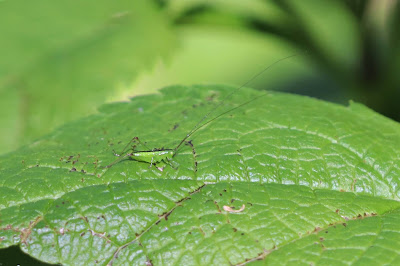One more Butterfly Count
"HEY LADIES, YOU'RE ON THE WRONG PAGE. I DON'T LOOK LIKE THAT." A Common Wood-nymph tried to be helpful at the Clear Creek Butterfly Count on July 26th. We were a small group of 2 but found 15 species with a total of 127 individual butterflies! In all, 49 species were found by 24 volunteers!
Painted Lady butterflies have been scarce this year. Glad to find one on the count!!
Red-spotted Purple nectaring on Teasel.
I witnessed an amazing interaction between a Great Golden Digger Wasp and a Katydid. Things didn't work out so well for the Katydid as it was about to become food for the unborn children of the Digger Wasp.
After the wasp had secured her prey, she carried it back to her nesting tunnels. The Katydid will be placed head first into the tunnel where the wasp will lay an egg on it. The wasp will then cover the hole and leave. When the egg hatches, the young wasp will have a live, but paralyzed meal ready to eat!




















































